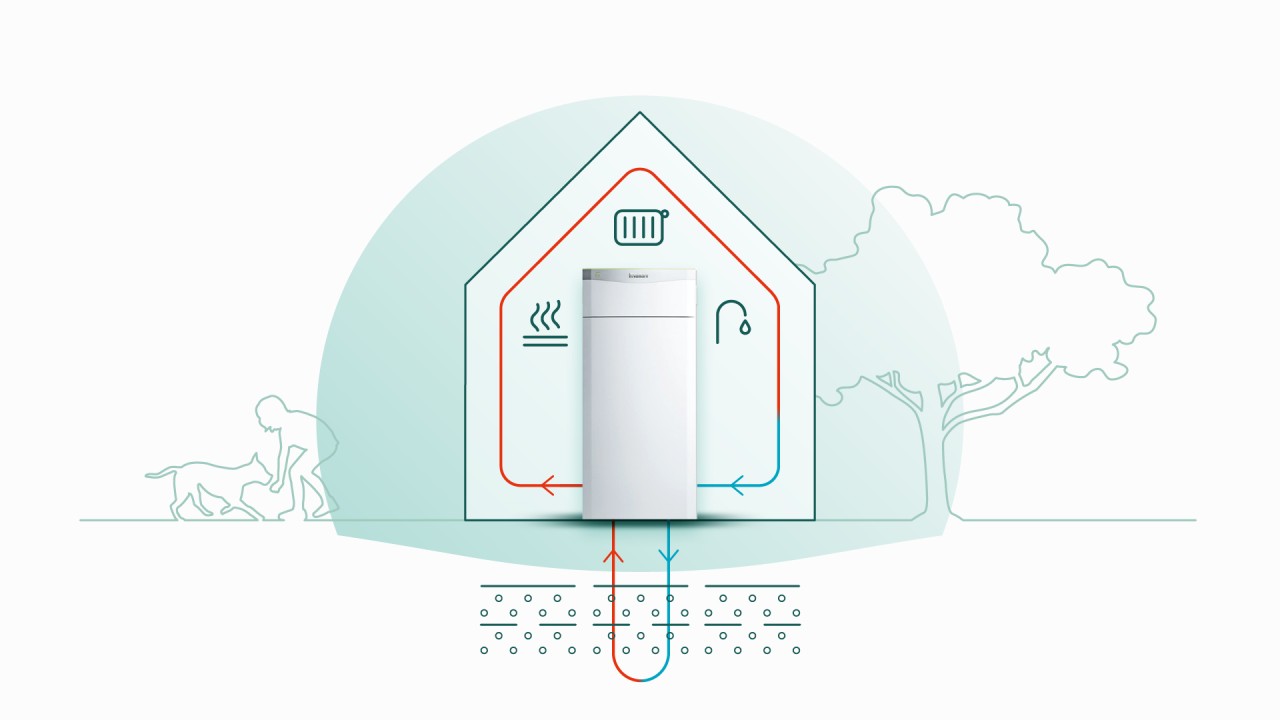Ground source heat pumps extract thermal energy from the ground near your property and convert this into heating and hot water for your home. They operate in cold temperatures and are incredibly efficient. The relatively stable temperatures of the soil create ideal operating conditions for ground source heat pumps, providing more daily comfort.
These types of heat pumps are suitable for homes that have suitable land to install ground arrays or a borehole system.





